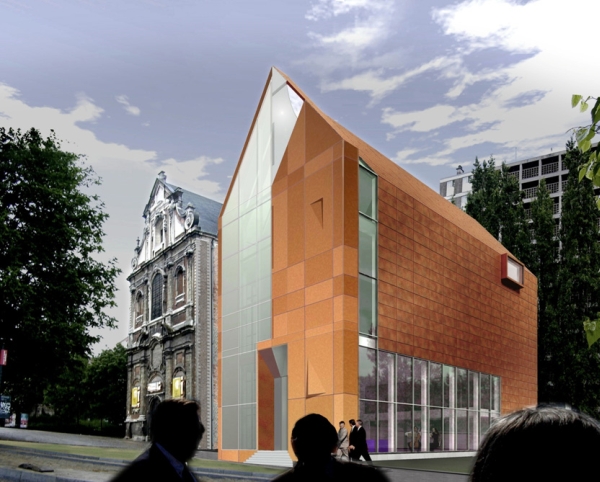Doubled
Brigittines Chapel, Centre for Art, Movement and Voice, Brussels
Architect: Andrea Bruno
Text: Fogarasi Barbara
Photos: Studio Bruno

The extension of the Baroque chapel in the heart of Brussels is the joint work of the Torino-based Studio Bruno and the Belgian SUM Project office. The conservation architect Andrea Bruno declared that the “Brigittines were already plural by name, now they are also plural by nature” – the driving concept of the design. The building originates from 1663, but had already lost its religious function in 1784. It was used for various purposes over the years, mostly as a storage place, until it became a permanent platform for the arts in 1975. The old Baroque church is situated just a few meters from a multi-storey building, constructed without the consideration of its existing environment, while the tracks of the north-south train connection pass immediately next by. It was in this almost violent context that an architectural solution was found by cloning the existing volume, thus strengthening its inherent features and providing it with new function and vitality. The complex now houses the City of Brussels Contemporary Arts Centre for Movement and Voice, the former chapel acting as a theatre space, while its new sister giving room to a foyer, offices, rehearsal rooms and backstage facilities. Vertical movement takes place in a glass section between the identical volumes. The Corten steel and glass of the new building, though very different from the original red brick and white stone, have the same register and with their folds and fissures imitate the Baroque façade’s proportions, theatricality and depth. Through its restoration, the Brigittines chapel has been reinterpreted, creating at the same time dialogue and contrast with its surroundings.
Design: Andrea Bruno
Architects: Studio Bruno, Torino / SUM Project, Brussels
Structure: Nei & Partners, Brussels
Technical installations: Gei, Brussels
Acoustics: Venac
Main contractor: Denys
Client: Brussels





